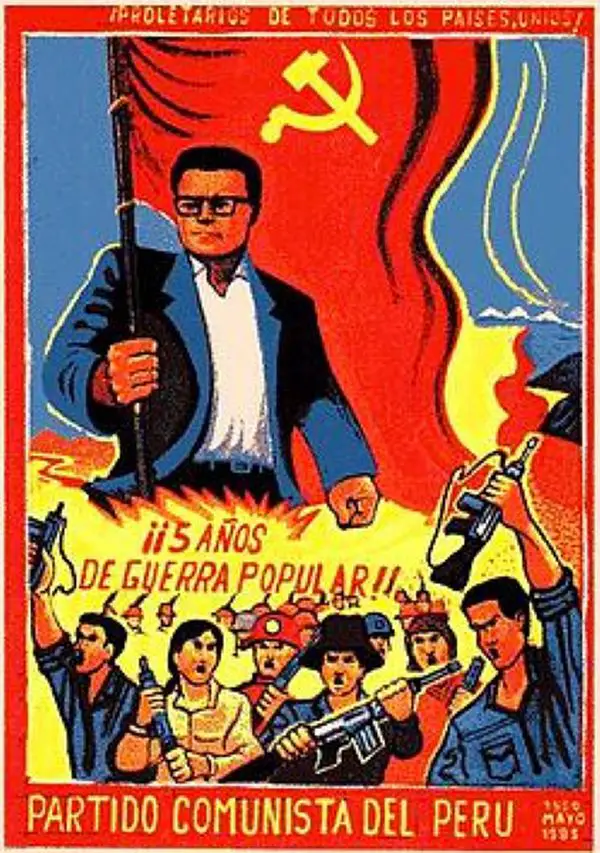After World War II, Latin America was ripe for political change. Inequality in the region was staggering, and urban union and student activists were allying with the rural poor to push for land redistribution and other progressive reforms. These largely non-violent political movements, however, met stiff resistance from entrenched local elites and their global allies. The USA, without exception, opposed these reform movements, even when they were were peaceful and when their representatives were democratically elected. Instead, across the hemisphere, Washington DC supported right-wing dictators that frequently used brutal, even genocidal tactics to suppress all left-wing opposition. Reform minded politicians, labor unionists, and student activists faced torture and execution and therefore went into hiding as military dictatorships suppressed civil liberties and ruled with fear.

It was clear to many that the only possibility for real change was revolution, and therefore national liberation armies sprung from urban slums and remote mountain valleys. Their exact compositions and ideologies varied according to local conditions and histories, but they were all vaguely on the political Left and were committed to equality and land and wealth redistribution. Many sought inspiration from the communist revolutions in the Soviet Union (Russia), China, and Cuba. But adapting communist ideas to regional circumstances was not always easy. Communism is a theory about how highly industrial and modern societies transform into egalitarian lands of shared prosperity. But at the time, no part of Latin America was highly industrialized, and, in fact, roughly half of the population farmed small plots of land for their subsistence. Nonetheless, by the 1950s, it was clear to many people that capitalism was the root of their problems: the nation’s profit went to US banks and corporations, as well as a small fabulously wealthy national elite, while most of the population remained mired in dismal poverty and inescapable exploitation. Change was needed and communism offered the best description of how that would happen. Revolution brewed in the countryside.
Many of these movements engaged in unsavory activities to further their missions: kidnappings, assassinations, and drug dealing were not uncommon. Revolutionaries usually saw these as unfortunate, but necessary tactics to achieve the greater good for the poor and oppressed. But the Shining Path (Sendero Luminoso) revolutionary movement in Peru stands apart from its peers. It began not too differently from the Revolutionary Armed Forces of Colombia (FARC) or the Sandinista movement in Nicaragua — that is, with a handful of intellectuals and inspired youths. Like those movements, Shining Path claimed to fight for the rural indigenous majority against the corrupt power elite. In reality, however, the Shining Path never had extensive support from their supposed constituency; therefore, rather than inspiring a mass uprising, they became a terrorist movement, indiscriminately using violence against the Peruvian citizenry in hopes of creating so much chaos that the government would fall.

From 1980 to 1992, Peru was beset by civil war between the Shining Path and the Peruvian government and both sides resorted to indiscriminate killings an grave violations of human rights. In the countryside, peasants were forced to choose a side, with no option of being neutral. Whichever side they chose exposed them to retaliation from the other. In urban centers, the revolutionaries set off car bombs while the government suppressed civil rights to sustain its control. It was a time of terror. Your second reading for this theme will provide a great deal more context.
With this theme, your intellectual work is to make sense of this violence — its causes and its consequences. You might find it particularly difficult to imagine how these materials relate to your life in 21st century USA. I have two tips in that regard:
First, as with most history, our lives are greatly enriched if we attempted to put ourselves in the shoes of people of the past. Like great literature, this helps us imagine ways of being in the world. Could you imagine thinking like the Shining Path’s leader, Abimael Guzmán? Would you have joined the Shining Path if you were a local kid (as in the third source)? When, to you, is a situation of oppression so extreme that violence is merited?
Second: Since Trump’s election in 2016, various voices on the extreme right have threatened civil war in the USA — a threat that became a visible reality with the insurrection at the Capitol building on January 6 2020, when Trump denied the election. To many conservatives, the American political system is so broken that extreme measures are warranted, from vigilante violence to self-declared border enforcers to private armies and to overturning elections. How did the Shining Path justify non-democratic change? And how did President Fujimori?
The big question:
What kinds of collective identity inspired the violence of the Shining Path? And how did national identity fit in this worldview?
Sources
As with all of the themes, this one advances in four stages.
Stage 1
The first source is an interview with the leader of the Shining Path, Abimael Guzmán.
Stage 2
Stage 3
Revolutionaries and Peasant Experiences